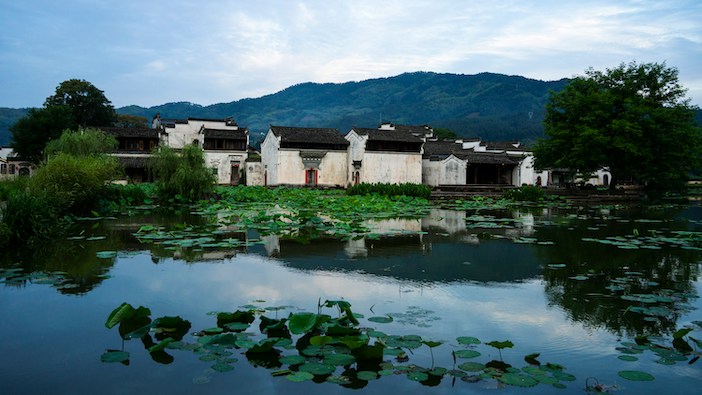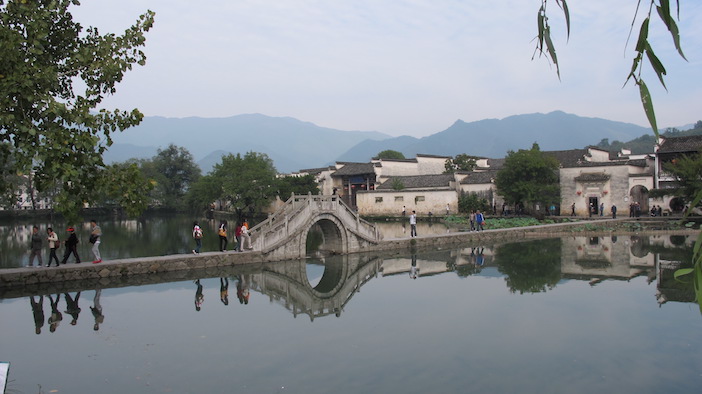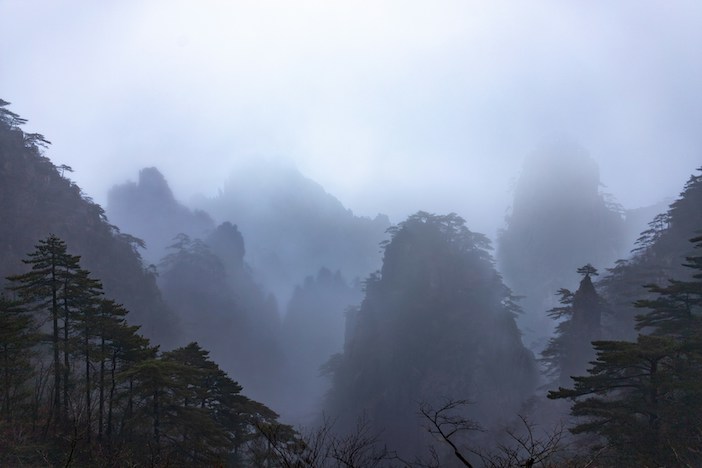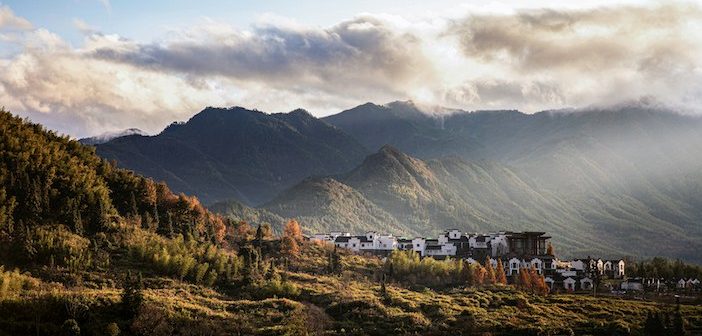In a two-part travel feature starting this weekend, author and broadcaster Sarah Tucker travels to the smallest province in China and discovers a place which challenges all perspective and values. Her own.
I cannot get my head around China’s vastness. The numbers are staggering. There are 8.5 billion people, with 3 ¼ million square miles of land mass. The last time I visited, I took a trip with an upmarket tour operator to Shanghai and Beijing, which was an excellent introduction, but on the flight back I met a group who had ‘done’ China in a month. They looked punch drunk. You cannot do one province, let alone one country, in a month. But, if your time there was short, there is a province that offers China in miniature, so to speak.
Anhui is one of the smallest provinces, stretching 350 miles from north to south. I say ‘small’, I mean small by Chinese standards; it has a population of over sixty million. It sits on the eastern side of the country and is billed by the local government the birthplace of modern tourism in China. Being home to three World Cultural and Natural Heritage sites, three UNESCO Cultural Heritage locations, as well as hundreds of villages and towns of cultural significance, they’re certainly giving it a good reason to visit.

Cheng Kan Cun, Anhui (Photo by Jeffrey Zhang, courtesy of Unsplash)
Considered the ‘peaceful’ province, the region has a tranquil beauty when you step out and away from the crowds. To wit, the Chinese love their country and visit places almost in tick-box fashion; ‘see, tick, move on’. The Chinese have no concept of ‘linger’; it is literally not in their vocabulary. Getting there is comparatively easy; while trains are worth the adventure, it’s a mere 1½ hour flight from Shanghai to Heifei, the buzzing, metropolitan, neon high-rise capital of the region, which translates as ‘where rivers converge’ – but the real allure of Anhui is its countryside.
There are parts of the region which remind me of the Cotswolds in a sort of alternate reality. The World Cultural Heritage village of Hongconzhen, features a water system in the shape of an ox, where each house is connected by waterways, with layered courtyards, lakes, and a mountainous backdrop. You walk through turnstiles to enter, into a maze of narrow streets with red tea lanterns, green pillar boxes, and courtyards you want to peer through, juxtaposed with locals wearing T-shirts and jeans as others float like Ophelia, albeit with mobile phone in hand. There are temples to visit, with their open courtyards and market stalls, which you’re never quite sure are for locals, tourists, or both. Known as the village in Chinese paintings, there were seemingly hundreds of painters from the local colleges while I was there, so it lives up to the name, so much so students have painted the reflected buildings so exacting the photographs I took are almost a double take.

Hongcunzhen (Image: Creative Commons)
Anhui has its fair share of mountains, too. There are many striking and incredible peaks to climb – there’s Jiuhua, known as the most beautiful place south of the Yangtze River, and Tianzhu; its main peak standing so tall it looks as though it’s holding up the sky. Little wonder Anhui’s topography has been featured in such blockbusters as Crouching Tiger, Hidden Dragon and Avatar with its haunting mountain and ancient village landscapes.
But perhaps its biggest draw is Mount Huangshan – another UNESCO World Cultural and Heritage Site, not to mention World Geopark alongside the Yangtze and Yellow rivers, and the Great Wall. To see it is to behold. It dwarfs America’s Grand Canyon. It’s known for its five wonders: unique pine trees which jut dramatically out of rockface, striking-shaped rocks (which inspired Cameron for the floating mountains scene in Avatar); clouds which linger as though you can step out onto them; its hot springs and winter snow. The last two eluded me, however, as I was there in the summer.

Huangshan (photo by Mahosadha Ong, courtesy of Unsplash)
And that can be the issue with visiting the region, as with all regions in China. Although Anhui is China in microcosm, it’s still vast. Everything is at least an hour away from the next and, at times, I felt I spent more time in the coach than I did at each stop. There is so much to see, so much space to cover. And although there are some things in museums which are written in English, it is a bit clunky. They are eager to tell you how great the attractions are, but not so adept at showing you. There are also times when the best parts of the Chinese local history, as in the ancient museums, are a reminder that this is the China that has been left bereft, spiritually and materially, through the modern era. And yet this is the one tourists – at least those from the UK – will most connect with. Of course, the Chinese don’t do questions. I am told, even in schools, it is poor show for children to ask questions – for it shows the teachers have failed to do their job.
Amid the vastness – and the expanse of travel – I used the journey time to take in the ‘peaceful beauty’ from the window; the motorised tuk-tuks and little cars, the water buffalo and the spectacular lakes. It is the sort of place that makes you want to journal because you’ll want to remember how you felt, rather than simply describe what you saw. It’s a place that makes you challenge your perspective. And it is the best of travel; impacting the psyche such that you won’t want to forget.
Sarah’s adventures through Anhui continue next Saturday as she experiences Confucius, creativity, and tea…




